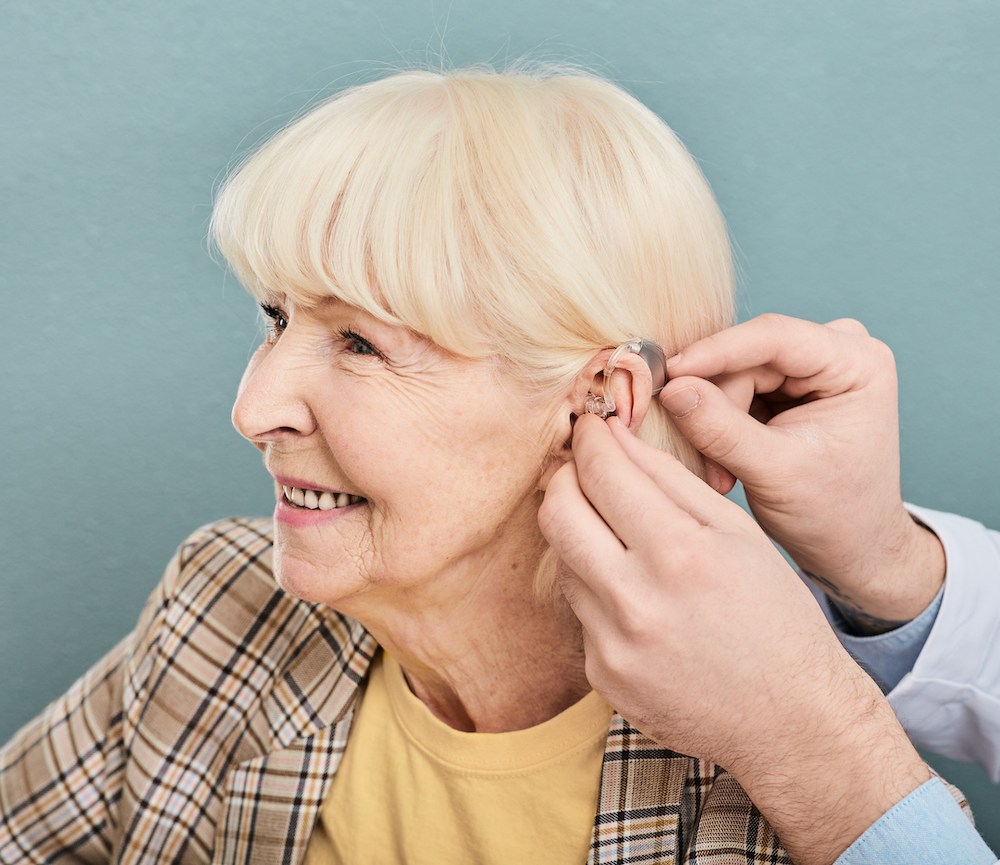Hearing Aid Innovations: What’s New in 2025?
Hearing aid technology has come a long way in recent years, and 2025

By: admin | October 20, 2025
Hearing aid technology has come a long way in recent years, and 2025 brings some exciting developments that directly address the challenges you face in real-world listening situations. Today’s devices are smarter, smaller and better at adapting to your surroundings without you having to think about it. Whether you’re switching from a quiet conversation at home to a busy restaurant or taking a phone call while walking outside, the latest hearing aids work harder to keep up with your changing environment. These improvements aren’t just about adding more features for the sake of it. They’re focused on making your listening experience clearer and more natural throughout your day.
What makes these advancements worth exploring is how they solve practical problems you might deal with regularly. New technology helps reduce background noise more effectively, makes voices sound crisper in challenging settings and connects seamlessly with your phone and other devices you already use. The goal is simple: give you better hearing support that fits into your routine without extra hassle. If you’ve been curious about whether newer hearing aids might work better for your lifestyle, or if you’ve been managing with older technology, now is a great time to learn what’s available. These updates are designed to make daily communication easier and more comfortable, helping you stay connected to the people and activities that fill your life.
Hearing aids have a long history that stretches back several centuries, beginning with very basic devices designed to amplify sound. The earliest known hearing aids were simple ear trumpets or horns, used in the 17th and 18th centuries. These devices were non-electronic and relied entirely on their shape to funnel sound into the ear, helping the wearer hear more clearly in certain situations. While they offered some improvement, they were limited in effectiveness, bulky and could only amplify certain types of sounds.
The 19th century brought significant changes with the introduction of mechanical and early electrical devices. Carbon and magnetic devices appeared in the late 1800s, marking the start of electrically powered hearing aids. These devices used carbon microphones to pick up sound, which was then amplified through basic circuits. Although still large and often worn as tabletop units, these early electric hearing aids represented a major step forward in allowing people with hearing loss to engage more fully in conversation and daily life.
In the 20th century, hearing aids became increasingly compact and more sophisticated. Vacuum tube technology allowed for more powerful amplification, and by the 1950s, hearing aids were small enough to be worn behind or inside the ear. The 1970s saw the introduction of transistor-based devices, which dramatically reduced size and improved portability, battery life and sound quality. Digital technology emerged in the 1980s and 1990s, allowing for advanced signal processing and customization to individual hearing needs. This era also introduced programmable features and the ability to adjust amplification for different listening environments.
Today, hearing aids are highly advanced, small and discreet, offering features that early inventors could only imagine. Modern hearing aids use microprocessors to analyze and enhance sounds in real time, reduce background noise and connect wirelessly to phones, TVs and other devices. They can be tailored to the specific frequencies and environments that challenge an individual most, and ongoing research continues to expand their capabilities. Over time, hearing aids have evolved from simple acoustic tools into intelligent devices that play a significant role in helping people hear clearly and participate fully in life.
Looking ahead to 2025, hearing aid design is focusing on making devices even smaller and more discreet. Many new models are nearly invisible when worn, helping you feel more at ease in social settings.
Another important trend is the use of smart technology that learns from your daily habits. Some hearing aids can now adjust themselves based on your surroundings, giving you clearer sound without needing to change settings. These updates are designed to fit more naturally into your routine.
Artificial intelligence is changing the way hearing aids handle sound, making daily listening clearer and more natural. AI helps your hearing aids distinguish between speech and background noise, which means conversations in busy or noisy environments can feel easier to follow. You no longer have to strain to pick out voices in restaurants, at social gatherings or during other everyday activities. The device continuously adjusts in real time, improving your ability to focus on the sounds that matter most.
AI also helps your hearing aids learn your listening preferences over time. They can recognize patterns in the environments you spend the most time in and adjust automatically to give you the best possible experience. This means less manual adjustment and fewer interruptions to your day, letting you engage more fully in conversations, enjoy music or follow other sounds around you with greater comfort and confidence.
Rechargeable batteries have become a convenient and reliable feature in many of the latest hearing aids, allowing you to use your devices throughout the day without the hassle of constantly swapping out tiny batteries. With a full charge, most rechargeable hearing aids can operate for an entire day, including during long periods of conversation, phone calls or listening to music. This consistent performance helps you focus on your activities rather than worrying about whether your hearing aids will last.
Longer-lasting batteries are particularly useful for busy schedules or when you travel, ensuring that your hearing aids remain ready whenever you need them. Charging your devices overnight makes it easy to start the day fully powered, and many hearing aids now come with user-friendly charging cases that provide a safe, portable way to recharge on the go. Some models also offer reminders or alerts to let you know when it’s time to charge, reducing the risk of running out of power during the day. This combination of convenience, reliability and simplicity helps you stay connected and engaged without interruptions.
Hearing aids in 2025 offer improved feedback management systems that help reduce whistling or squealing sounds. Feedback happens when sound from the hearing aid speaker gets picked up by its microphone. Advanced feedback control quickly adjusts the sound output before feedback starts.
With this technology, you can enjoy clearer listening without sudden high-pitched sounds interrupting your day. It also allows for a more comfortable fit, as the device can sit closer to your ear without causing feedback.
A major advancement for 2025 is the use of 3D ear scanning technology for custom-fit hearing aids. This process uses a special scanner to create a detailed map of your ear’s shape, allowing for a more precise fit than traditional methods.
Custom-fit devices made with 3D scanning are more comfortable for long periods and less likely to slip or cause irritation. They also improve sound quality by reducing gaps where sound could leak out or unwanted noise could get in. This technology helps ensure your hearing aid fits perfectly and works as well as possible.
Bluetooth technology is now common in many hearing aids, making it easier to connect with other devices. You can pair your hearing aids directly to your smartphone, tablet or television.
This allows you to stream phone calls, music and other audio straight into your hearing aids without extra wires. You can also adjust the volume or settings using an app on your phone for added convenience. To get the best results, make sure Bluetooth is turned on for both your hearing aids and the device you want to connect. If you have trouble, restarting both devices or checking for software updates can often help.
Many hearing aids now include features that help reduce background noise in busy places like restaurants or shopping centers. Directional microphones focus on sounds coming from in front of you, making it easier to hear conversations while lessening noise from other directions.
To get the most out of these features, try facing the person you want to hear and avoid sitting near loud speakers or busy walkways. Adjusting your hearing aid settings or switching to a special noise reduction mode can also help when you are in a noisy environment. These steps can make social situations feel more comfortable.
Many hearing aids in 2025 are built to adjust automatically to your changing listening needs throughout the day. These devices use smart sensors and software to notice changes in your environment, like moving from a quiet living room to a shopping mall.
Some automatic adjustments include lowering background noise in crowded places, boosting speech sounds when someone is talking nearby and switching settings for music or outdoor activities. These features work on their own, so you do not have to press buttons or remember special programs. This makes it easier to move through different situations without missing important sounds.
Smartphone apps now let you adjust your hearing aid settings with just a few taps. You can quickly change the volume or switch programs based on where you are. This gives you more control over your listening experience and can help make conversations clearer in different places. Learning how to use these apps and keeping your phone handy can make managing your hearing aids easier.
Many new hearing aid models for 2025 are built to handle water and daily wear much better than before. Improved seals and stronger materials help protect the devices from sweat, rain and accidental splashes.
This added durability means you can go about your day with less worry about moisture or bumps affecting how well your hearing aids work, whether you are exercising or spending time outdoors.
Modern hearing aids now come with health tracking functions that go beyond just helping you hear better. These devices can monitor steps, track physical activity and even watch for signs of falls throughout your day.
Some models use sensors to collect this information and send it to a smartphone app, so you can check your daily progress or share it with family members if needed. This added technology helps you stay more aware of your overall health while using your hearing aids.
Hearing aids in 2025 can connect with smart home devices and accessories, making daily life easier and more convenient. You can use your hearing aids with doorbells, alarms and voice assistants.
Some ways hearing aids work with smart home technology include receiving alerts from your doorbell or smoke detector straight to your hearing aids, controlling lights or thermostats using voice commands, and getting reminders or calendar alerts directly into your hearing aids. These connections help you stay aware of important sounds around your home without needing to check separate devices.
Hearing aid technology in 2025 is designed to make your daily listening experiences feel easier and more natural. These advancements focus on practical improvements that fit seamlessly into your routine, helping you follow conversations, enjoy music and participate in social settings without extra effort. The new features are meant to support the way you live, making communication smoother and more enjoyable.
If you are thinking about exploring these updates, our team of physicians & audiologists at Audiology and Hearing Aid Center can help you understand which options work best for your needs. You can reach our Berlin, Oshkosh, Neenah, Wautoma, Menasha or Appleton, WI offices at (920) 486-6922. We can guide you through the latest technology, answer your questions and help you find a hearing solution that fits seamlessly into your daily life.
Tags: faqs, hearing aid styles

Hearing aid technology has come a long way in recent years, and 2025
By: admin | October 20, 2025

Helping children with hearing loss isn’t just about making smaller
By: admin | July 29, 2025

Your hearing aids already do so much more than just help you hear better
By: admin | June 20, 2025
